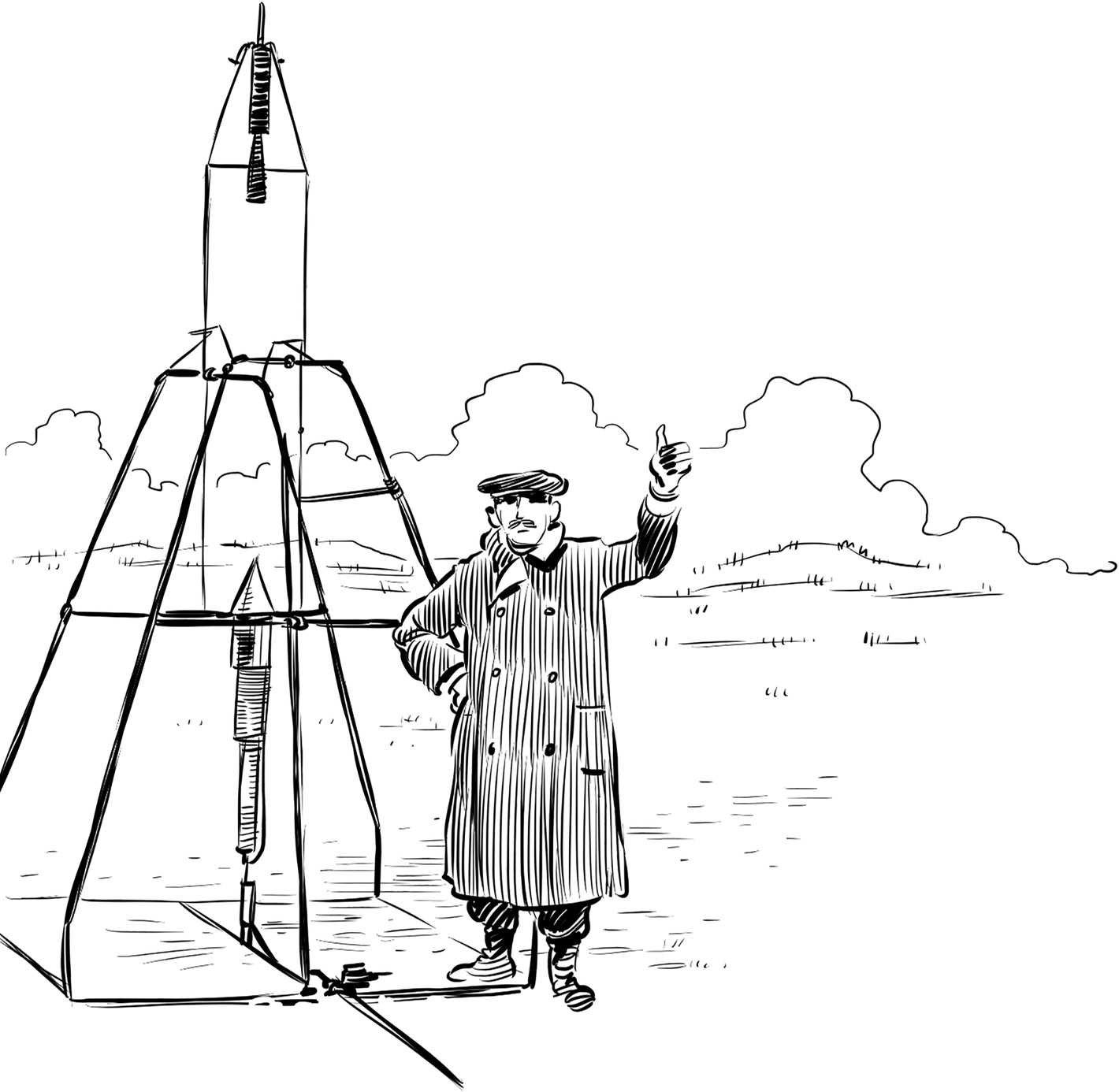1920
“How many things have been denied one day, only to become realities the next!” —Jules Verne, From the Earth to the Moon
Have you ever looked up at the moon and wondered how far away it really is? To the naked eye, it sometimes looks as if you could just reach out and grab it, but the moon is actually 232,271 miles away from us! What’s even crazier is that between 1969 and 1972, twelve men actually made it to the surface of the moon and back! That said, it wasn’t exactly a smooth journey from the Earth to the moon.
As it turns out, the hardest part of space travel is actually getting off Earth. So far, the most efficient way to escape Earth’s gravity is to use rocket propulsion, which is easier said than done.

The first rockets were invented when Chinese alchemists accidentally discovered gunpowder while trying to create an elixir of life. In 1232, the Chinese fought the Mongols at the Battle of Kai-Keng and used rockets on the battlefield for the first time in history. The Chinese Army built weapons that looked (and acted) like gigantic bottle rockets and launched them at the attacking Mongol Army. The rockets weren’t superaccurate and probably didn’t do a ton of damage, but the explosions, smoke, and fire were so terrifying that the Mongols turned back and fled!
And according to legend, during the midsixteenth century, a Chinese official named Wan-Hu wanted to visit the moon. Wan took a wicker chair, strapped forty-seven rockets to it, and planned to use a set of kites to steer himself through the air. On his signal, servants quickly lit the fuses on the rockets, each filled with highly explosive gunpowder. A moment later, a boom louder than thunder sent everyone around diving for cover. When the smoke cleared, there was no sign of Wan-Hu or his trusty chair.

A depiction of Wan-Hu in his rocket chair, on display at the Marshall Space Flight Center in Alabama.
Needless to say, rocket science has come a long way since then.
Early rockets were based on a simple concept: an aerodynamic cylinder with two fuel tanks, each with a reactive substance that once combined and ignited would create a chemical reaction. The resulting explosion would be funneled downward to create enough lift to compensate for the rocket’s mass and propel it upward. Simple, right?
Nope. A metric ton of variables has to be accounted for—including but not limited to temperature, size, weight, design, amount of fuel, durability, weather, etc. The slightest miscalculation could result in catastrophic failure (and in the early days, it often did). In fact, the entire process of perfecting rocket technology is a repeated exercise in failure: make a rocket; launch it; if it blows up, figure out what went wrong; repeat. The scientific method itself is built around seeking out flaws and improving on initial concepts until you have something that works.
In 1895, Russian scientist Konstantin Tsiolkovsky became the first to seriously consider the use of rockets as a potential means of traveling into orbit. He came up with the first equation in rocket propulsion. He theorized the use of mixing liquid hydrogen and liquid oxygen as fuel (way before it was ever possible to do so) and even calculated the speed needed for a rocket to break free of Earth’s gravity (which, for those wondering, is about 6.9 miles per second, or 25,020 miles per hour!). This is what is known as escape velocity.
In 1903 and 1911, Tsiolkovsky published two volumes of Exploration of Outer Space by Means of Rocket Devices in which he explained that a multistage rocket would be needed to achieve escape velocity. (A multistage rocket is basically a launch vehicle made up of multiple rockets stacked together that work in sequence—one after the other.) But few people seemed to notice these incredible revelations until decades later.
Meanwhile, an American physics professor from Massachusetts named Robert Goddard was working on some calculations of his own. In 1916, he sent a proposal to the Smithsonian Institution which theorized how a rocket could operate in space without the need for air. The Smithsonian was so pumped by his research that they sent him a $5,000 grant to see his work in action.
On March 16, 1926, Goddard successfully launched the world’s first liquid-fueled rocket. The 10-pound rocket flew 41 feet into the air in just 2½ seconds! Goddard continued to improve his rockets in New Mexico, where, in 1930, he launched a rocket 2,000 feet into the air at 500 miles per hour! Throughout his life, Goddard secured 214 patents, many of which became essential to the development of propulsion technology, and he did it all despite constantly being called a crackpot.
Both Robert Goddard and Konstantin Tsiolkovsky continued to work independently of each other for years. They tried to perfect their rockets with no help or interest from either of their respective governments. Then World War II happened, and the landscape of rocket science changed forever.
